Many Master Bond epoxy systems are formulated with chemical resistance. We continually test our materials by exposing them to specific chemicals over a long period of time. A common way of testing the chemical compatibility of an epoxy is by immersing a sample in a chemical and measuring its change in weight over time. A significant loss or gain in weight would indicate a decreased ability of a material to stand up to chemical exposure. These tests allow us to more accurately recommend the right product based on specific application requirements.
In this experiment, we focused on testing our epoxies for their resistance to methylene chloride. Methylene chloride is a well-known paint stripping agent and is typically used to remove fully cured epoxies. Our goal in performing these tests was to evaluate if any of our products can withstand exposure to this particularly aggressive chemical.
The compounds Master Bond used for testing are a variety of two-component and one-component UV curing systems with good overall chemical resistance. In total 15 products were tested: EP41S-5, EP41S-1HT, EP62-1HT, EP62-1 (100:5, which is not the standard 100:10 mix ratio but this was chosen since this mix ratio has exhibited better chemical resistance to certain chemicals for this product), EP125, EP42HT-2, UV25, EP39MAOHT, EP42HT-2AO-1 Black, EP46HT-2AO Black, UV16, UV22DC80-1, UV26, and EP41S-5LV. Many did not survive, in that they were attacked and broken down in less than one week and we were unable to even capture weight measurements. This shows the aggressive nature of the chemical that we were dealing with. Those that did survive are shown in the graphs below.
For the first round of testing, which involved exposure to methylene chloride for 10 months, the products tested were EP41S-5, EP41S-1HT, EP62-1HT, EP62-1, EP42HT-2AO Black and EP41S-5LV. For the second round of testing, many of the epoxies which were not structurally stable after the 10-month exposure were removed from the chemicals and the soaking was discontinued. Two products i.e., UV25 and EP41S-5 were then soaked in methylene chloride for two years since they stood out from the rest in terms of weight gain and/or deterioration. For both tests, a few thin castings, roughly 2 inches in diameter and around 0.125 inches thick, were made for each product and cured in accordance with their specifications. Once the cured samples were created and initial weight was recorded, the castings were immersed in methylene chloride. Then, we continued recording frequent weight measurements. Below you will see the results of soaking for each time frame. The castings were weighed periodically, and the graphs shown below demonstrate the percentage of weight change over time.
Graph 1
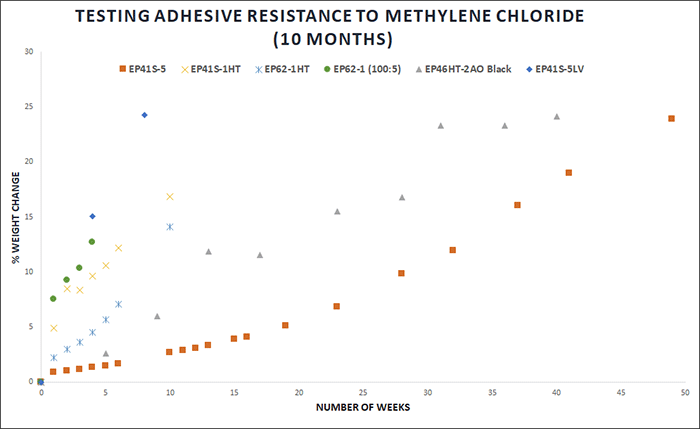
Graph 2
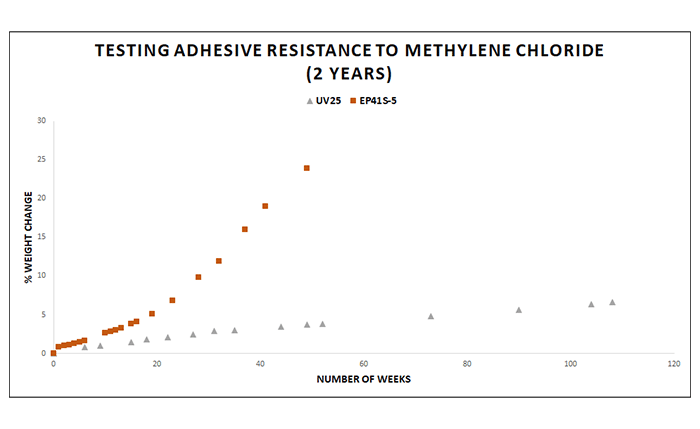
These graphs represent seven of the 15 products that were to an extent able to survive immersion in methylene chloride. Compared with other chemical resistance testing, these results demonstrate that over time, the weight change doesn’t seem to level off with continued exposure to methylene chloride. Among those products that survived, weight gain was noticed for the duration of the test. However, most notable was the performance of UV25 which demonstrated less than 10% weight gain after more than 100 weeks (about 2 years), with no other product able to come close.
Chemicals can etch the surface of an epoxy (resulting in loss of weight), or they can cause swelling of the sample (resulting in weight gain). In general, a weight change of less than 4-5% (gain or loss) can be considered excellent, especially since these tests may be more rigorous compared to actual service conditions. However, for methylene chloride, due to its aggressive nature, the parameters for evaluation were modified to focus more closely on time of exposure. It is also worth noting that in the context of a bonded joint or a potted assembly the exposure to methylene chloride might not be as severe or direct as in the above test conditions.
Please note, when choosing an epoxy for an application where the resistance to methylene chloride is critical, many other factors must be considered in addition to the chemical resistance. For example, depending on the length of exposure, each of the epoxies in the charts above offers a distinct set of performance properties. For short term exposures lasting approximately five weeks or less, if a moderate viscosity and long working life are needed, EP62-1HT may be acceptable, or if thermal conductivity and high temperature resistance are needed EP46HT-2AO Black is an excellent candidate. For exposures up to say 20 weeks (about 4 and a half months), in applications requiring electrical insulation and low outgassing, EP41S-5 may be used. For long-term exposures up to two years where the application area has full access to light (without any shadows or blocks) and a fast-curing product is required, UV25 seems to be a good fit. These products all need to be processed or cured differently but the key in all cases is the addition of heat for enhancing/optimizing chemical resistance especially to methylene chloride.
Disclaimer: The findings in this article are not meant to be used for specification purposes.
Adhesives that Withstand Methylene Chloride
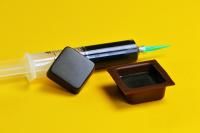 |
EP41S-5 Excellent chemical resistance to solvents, bases, acids, alcohol and fuels. Withstands exposure to methylene chloride, phenol (10%) and nitric acid (30%). Well suited for coating tanks, pumps and vessels. Moderate viscosity with good flow properties. Can be used for potting/encapsulation. Formidable physical strength properties. Serviceable from -80°F to +450°F. |
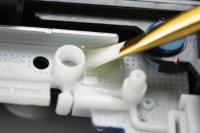 |
EP62-1HT Superior resistance to harsh chemicals, particularly to acids. Two part epoxy has long pot life at ambient temperatures. High bond strength properties. Ideal for bonding and coating. Good flow. Reliable electrical insulator. Serviceable from -60°F to +450°F. Tg 150-160°C. Shore D hardness 80-90. |
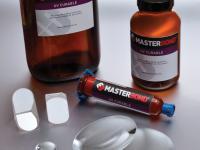 |
UV25 Multi-purpose, one part UV curing system for bonding, sealing, coating and encapsulation. Excellent optical clarity, superb physical properties, moderate viscosity. Ultra high glass transition temperature (Tg) over 180°C. Fast fixture times. Rapid curing. Serviceable from -60°F to +500°F. |
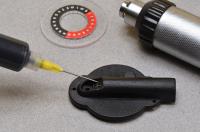 |
EP42HT-2AO-1 Black Good heat conduction. Serviceable from 4K to +400°F. Resists water, oils, fuels. Excellent dielectric properties. Enhanced dimensional stability. Castable up to 2-3 inches thick. Low shrinkage upon cure. Good flow. Meets NASA low outgassing standards. |
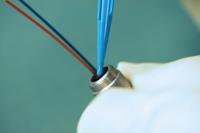 |
EP41S-5LV Excellent chemical resistance to solvents, alcohols, fuels, acids and bases. Low viscosity with good flow properties. Can be used for potting/encapsulation. Formidable physical strength properties. Serviceable from -80°F to +350°F. |
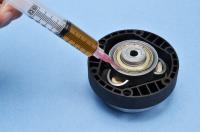 |
EP41S-1HT Two component, ambient temperature curing system with excellent physical properties. Thermally stable. High compressive strength. Features extraordinary resistance to fuels, alcohols and organic solvents. Withstands 1,000 hours 85°C/85% RH. Service temperature range -60°F to +400°F. Moderate viscosity. Good electrical insulator. |
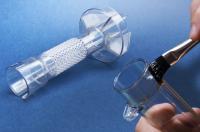 |
EP62-1 Cures rapidly at moderate elevated temperatures. Superior resistance to moisture. Two part epoxy has long pot life at ambient temperatures. High bond strength properties. Reliable electrical insulator. Serviceable from -60°F to +450°F. Withstands aggressive chemical exposure. Tg 160-165°C. Shore D hardnes >80. |
